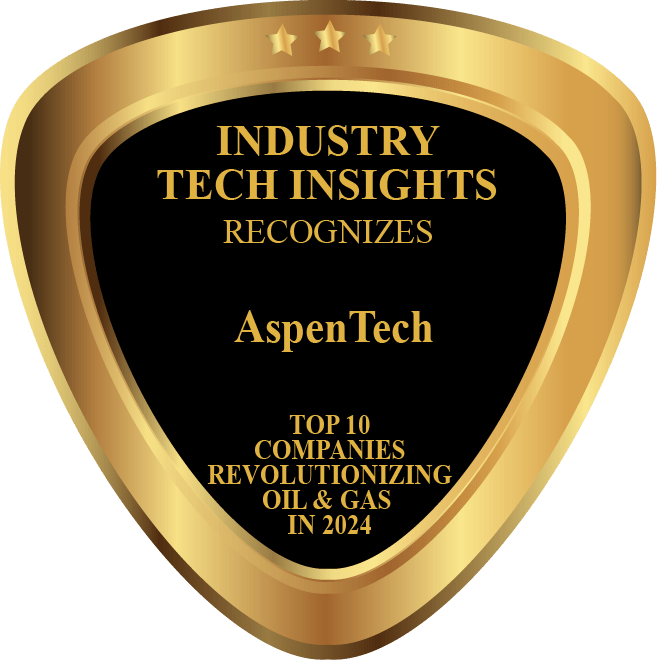
- December 28, 2025 2:41 am
- California

Antonio Pietri
President and Chief Executive Officer
engineering, AspenTech, a Massachusetts-based company, plays a pivotal role in the oil and gas industry by leveraging cutting-edge technologies, including AI (artificial intelligence). Let’s delve into how AspenTech contributes to this dynamic sector:
– Challenges in Exploration: Oil and gas exploration involves expensive processes, specialized equipment, and complex permitting procedures. However, AspenTech’s AI solutions help optimize petroleum portfolios.
-Data Utilization: AI analyzes extensive datasets from past surveys, explorations, and active wells. It identifies patterns, correlations, and probable reserves.
– Predictive Insights: AI minimizes accidents and disruptions during extraction by predicting equipment failures and dangerous conditions.
-Environmental Monitoring: Advanced AI algorithms analyze satellite imagery and remote sensing data to detect oil spills and pipeline leakages.
In summary, AspenTech’s AI-driven solutions empower the oil and gas sector, making it more efficient, sustainable, and responsive to environmental challenges.
Mike Brooks, Global Director for Asset Performance Management (APM) at AspenTech, elaborated on the role of APM 4.0 in industries that deal with massive data.
APM 4.0 encompasses more than just routine maintenance of mechanical equipment and preventing unscheduled downtime. This strategy integrates Industry 4.0 technology with recommended maintenance procedures to increase dependability and extend asset life. To properly support the business objectives of any manufacturer.
Asset performance management (APM) relies heavily on technologies like condition-based monitoring and product inspections, which can be supplemented and enhanced by new technologies but not completely replaced. Hence, it is of utmost importance not to implement new technologies without proper strategies and goals.
“Often times, we talk about initiatives, like big data, digital transformation, etc. But they aren’t real initiatives, they are tools to accomplish an initiative. Initiatives might be operational excellence, improved product quality, longer lifespan of equipment etc. It is important for business to realise the initiatives and then decide on the tools for digital transformation. Businesses should steer away from implementing technologies for technology sake,” said Brooks.
“15- 20 years back, some businesses picked out technologies like business intelligence and data warehousing, but 60% of those projects failed as they were unaware of their needs. Currently a lot of digitalisation is taking place, but infrastructure doesn’t solve the problem. It’s the applications that run against the data that solve the problem. AspenTech has the best applications to meet the business needs. We meet the customers wherever they are on the journey and help them go to the next step.”
Skills, workforce, and competencies are some of the significant challenges. The company is navigating this issue by keeping the application simple. They go by the saying, “Smarter on the inside, not on the outside.” All the data science and deep engineering are inside the tool, making it easier to navigate. But with application implementation comes the questions of return on investment and cost efficiency.
From a cost center to a driver of profitability
Implementing APM 4.0 changes the asset from merely a cost center to a significant driver of profitability. APM 4.0 drives insights and innovations for operational excellence. Machine maintenance, unplanned downtime, and the like impact the cost. These unforeseen events can be navigated through with APM 4.0.
“When a business looks from the top level, the two things that are normally looked for is ‘making money’ and ‘saving money’,” explained Brooks.
“If it is a cost centre, the concentration is on saving money. The concept is, if we can understand the behavioural pattern of an equipment and predict its chance of failure, there is an alternative to shut it down in a safer and environmentally friendly manner. This also ensures that the downtime is less. This in turn increases profitability. On the other hand, the tools in our stable match simulations against the future to predict the outcomes of changes.”
He elaborated that assets shouldn’t be examined by themselves. Assets and processes are intertwined, so they cannot be separated. AspenTech tools give insights on possible changes that can be made, with cost and risk involved. This, in turn, replaces opinions with data.
“Data doesn’t have opinion. Previously companies implemented technologies driven by opinions. But now, we bring science into the picture. This is done with intense pattern recognition. We look for accurate interpretations of the behaviour of a piece of equipment that runs normally and when it deviates from norm, especially when it follows a pattern of degradation,” concluded Brooks.
The Latin American refining arena continues to invest in digital solutions to meet the region’s increasing demand for energy while addressing sustainability aims. The Latin America Refining Technology Conference (LARTC) is the main downstream show where the region’s most influential senior executives meet to discover the value new technologies can deliver and recognize outstanding accomplishments in Latin American refining. During this event, AspenTech was recognized as the “Best Digital Technology of the Year” recognition with Aspen GDOT™. The award showcased the company’s successful track record, for almost two decades, of delivering significant enhancement in margin and energy efficiency via its innovative closed loop, multi-unit diligent optimization technology.
GDOT enables global refining organizations to vertically integrate planning, scheduling, and advanced process control (APC) layers to work, adapt, and optimize together. By closing the gap between layers, refineries can maximize margins by reducing product giveaways and maximizing production of the most valuable products while advancing towards sustainability goals.
Compañia Española de Petroleos S.A.U. (CEPSA), a multinational energy company with headquarters in Madrid, expanded the capacity of its La Rábida Refinery, as it was becoming increasingly complicated to integrate new units in a coordinated manner for optimal operations. Balancing the site, the hydrogen network became more complex, leading to hydrogen losses that flared and fueled gas networks. Moreover, on-site hydrogen production was highly carbon-intensive. With Aspen GDOT, La Rábida Refinery optimized its hydrogen network by prioritizing and maximizing hydrogen feedstock to critical consumers, decreasing hydrogen flaring by 750 Nm3/hour, and lowering CO2 emissions by 4,200 tons/ year. This resulted in about €450K/year of savings in 2019, and depending on current natural gas and CO2 emissions costs, savings in 2022

" AspenTech's AI-driven solutions empower the oil and gas sector, making it more efficient, sustainable, and responsive to environmental challenges "